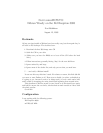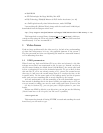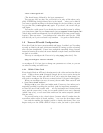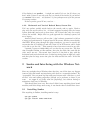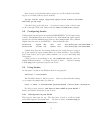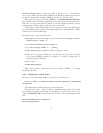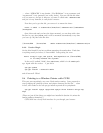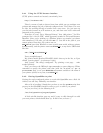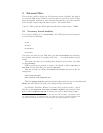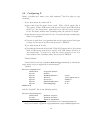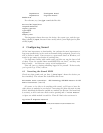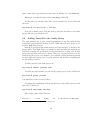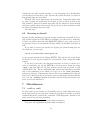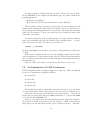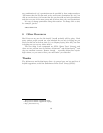if the display is not perfect — it might not crash if it’s not, but if it does, you
don’t want to have to not only wait for it to check all its inodes (if you haven’t
yet tune2fs’d it to ext3 — see Section 7.1), but perhaps screw up in the process
of so many crashes.
If that’s perfect, great! If not, read on . . .
1.2.2 Horizontal and Vertical Refresh Rates; Screen Size
If it’s not perfect, quickly switch back to the console, and try again. I had to
play with the screen sizes a bit. A friend suggested starting with the lowest
option (640×480) and work up from there, but I found that only the exactly
correct one worked. Maybe this is a good approach for a desktop system, but
not a laptop.
Another friend, however, tell me that “ that’s almost guaranteed to fail on
a laptop, as I understand it. Laptops have LCD screens, which are more finicky
than LED. When going through the dpkg-reconfigure, you need to specify the
screen-size that it is capable of, and tell it that it’s an LCD screen, and it ought
to be able to get the rest.” That seemed to have been more correct in my case.
I wanted a screen at 1600×1200, so I set that for my screen size. The first
time I installed Debian on this machine, that plus the r128 video card did the
trick, and I was set. The second time, however, I also had to play with the
horizontal and vertical refresh rates. I ended up setting them as high as I could,
and that plus the large screen size plus the r128 card did the trick. It felt like
voodoo.
2 Samba and Interfacing with the Windoze Net-
work
Since my workplace has a Windoze share that they use all the time, my biggest
concern with this install was interfacing with that in a reasonable manner. By
“reasonable” I do not mean big blue-and-green buttons with “click here to view
all files” tabs and talking paperclips (though you’re welcome to those if you
want — see vigor if you really want the paperclip!), but without having to
maintain a dual boot to Windoze.
This should have been easy. But since I didn’t know anything about kernel
modules, and little things went wrong, it was harder than it should have been.
2.1 Installing Samba
Like anything in Debian, installing samba is easy:
apt-get update
apt-get install samba smbclient
4



